Contact adhesives: The right handling counts
Contact adhesives offer you a wide range of possibilities for bonding various materials. For example, you can glue together carpets, vinyl, leather, cardboard, rubber and various soft materials with this sort of adhesive.
Contact adhesives are often used in materials with high shear strength, such as laminates. In the automotive industry, they are used, for example, for attaching profile and sealing gums or fabrics. In addition, contact adhesives are used in saddlery shops, workshops and service facilities.
Solvent-containing- vs. water-based contact adhesives
Contact adhesives are available in both solvent-based and in water-based dispersion systems. Contact water-based adhesive must be fully dried to achieve optimum adhesion. Solvent-based systems, such as KENT Clear Bond, dry faster and thus enable faster bonding.
With KENT Clear Bond solvent-based contact adhesive, the adhesive remains sticky for up to 12 hours and provides a good balance between stickiness, peel adhesion and shear strength. As a result, solvent-containing contact adhesives are particularly resistant to stress peaks which are produced by the action of force on the edge region of the bond.
Solvent-based contact adhesives are also a thicker consistency and are therefore suitable for precision work.
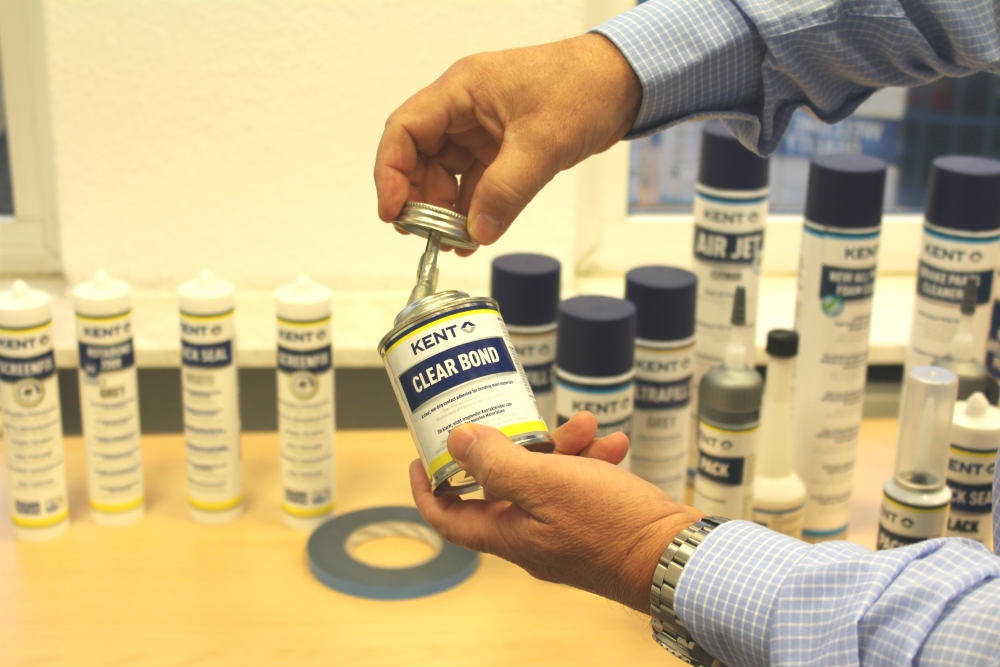
The solvent-based contact adhesive KENT Clear Bond can be repositioned up to 12 hours after gluing
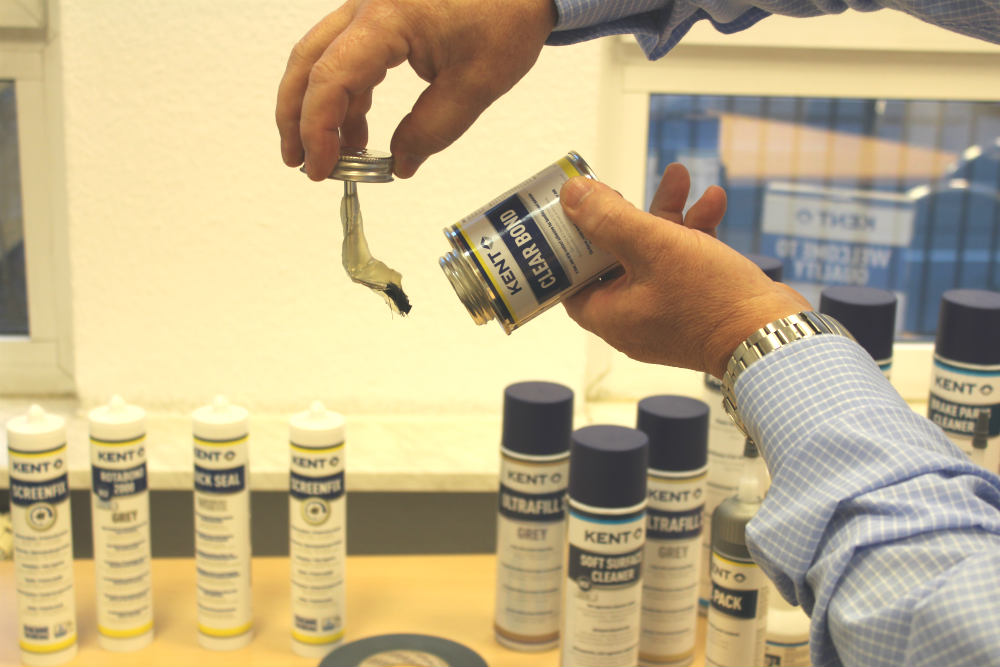
KENT Clear Bond contact adhesive does not drip and allows you to work without problems
How to: The correct handling of contact adhesives
With the aid of contact adhesives, you achieve optimum support and maximum durability. However, only if it is handled properly and you apply the contact adhesive correctly. In the case of improper use, the surfaces to be bonded are likely to stick together. However, the adhesive strength and the adhesive results are limited in the case of incorrect handling.
We therefore recommend the following procedure:
A thorough surface cleaning: The ‘nuts and bolts’ of an optimal bonding result
In order to achieve the best possible gluing results, it is first necessary to clean the surfaces to be glued. The surfaces should be free of moisture, oil, grease and dust. For surface cleaning, we recommend KENT Acrysol and / or KENT Soft Surface Cleaner. Both products offer optimal cleaning results and therefore the best prerequisites for the best possible adhesion result.
The correct application of the contact adhesive
Once the surfaces have been cleaned, the contact adhesive is applied with a thin, uniform layer to the surfaces to be bonded. With the KENT Clear Bond you can apply the adhesive using the brush in the lid.
Unlike other adhesives, you should initially allow the contact adhesive to dry for several minutes. The flash-off time should be at least two minutes. If you subsequently apply the surfaces to be glued together, you need less pressure than other adhesives.
After a short pressing of the surfaces, no pressure-exerting aids are required. The use of terminals is therefore no longer necessary.
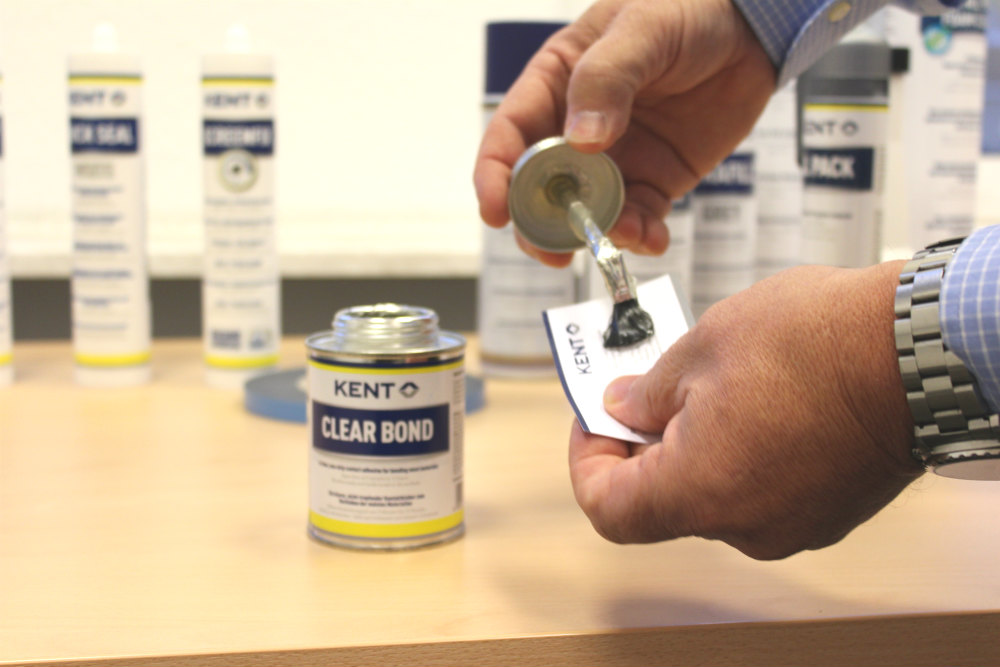
KENT Clear Bond contact adhesive is easy to apply with the brush integrated in the lid
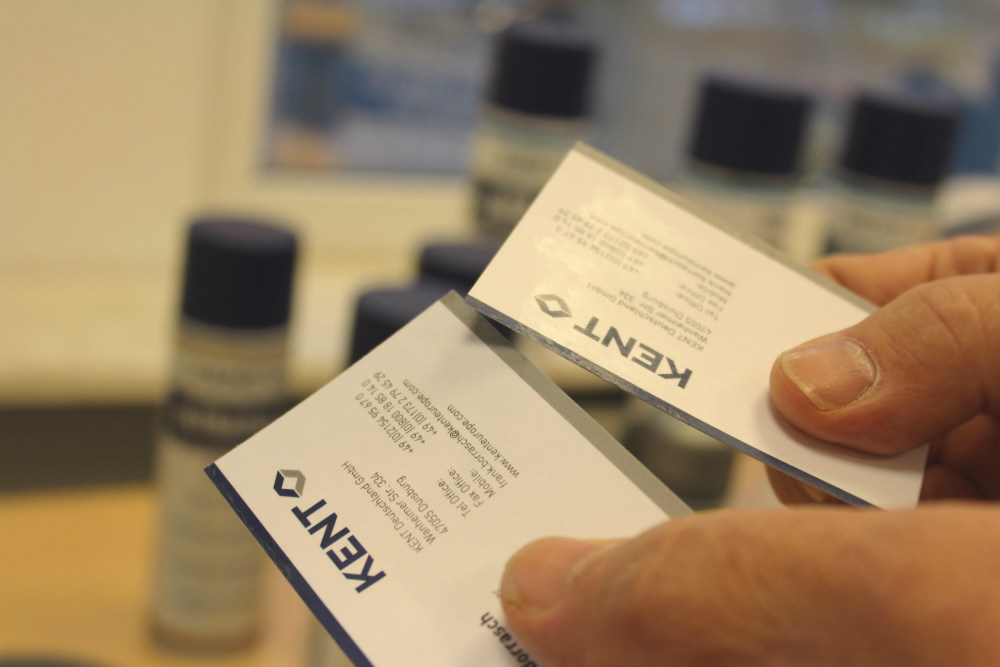
When applying the contact adhesive a thin layer is sufficient
After gluing together, repositioning is no longer possible – not so at KENT
For many contact adhesives, you cannot move the surfaces once they have been pressed against each other. A different positioning is thus no longer possible. KENT Clear Bond, on the other hand, offers the possibility to move and reposition the surfaces 90 seconds after gluing together.
Particularly in the case of large surfaces, it is often helpful to be able to correct and optimize the position once the surfaces are pressed together. This enables you to compensate for minor inaccuracies in the mating of the surfaces, thus ensuring optimal positioning.
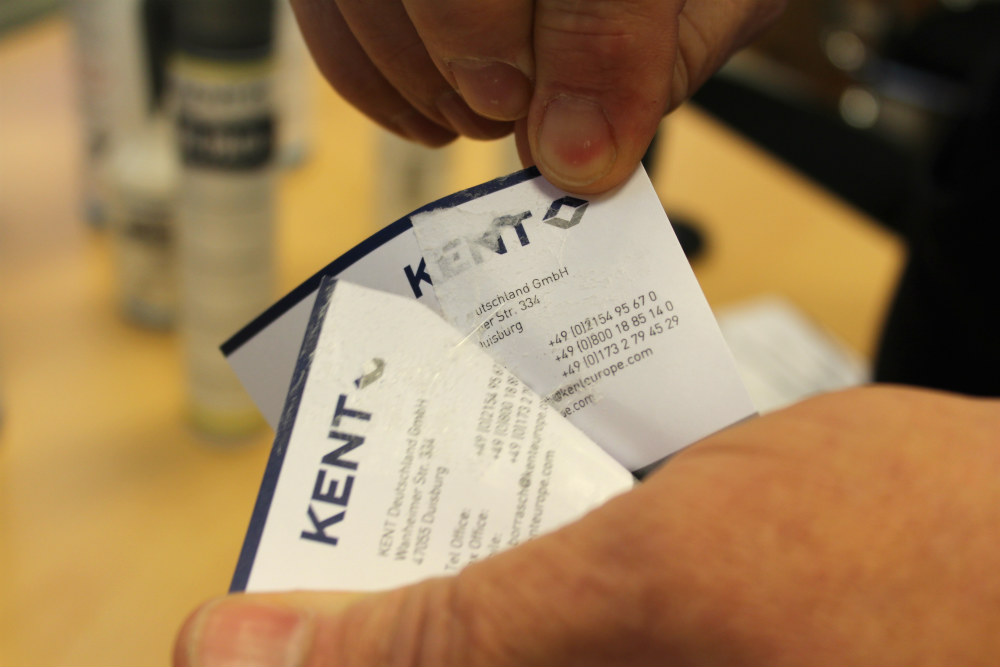
KENT Clear Bond contact adhesive offers the possibility of repositioning up to 90 seconds after the adhesive application
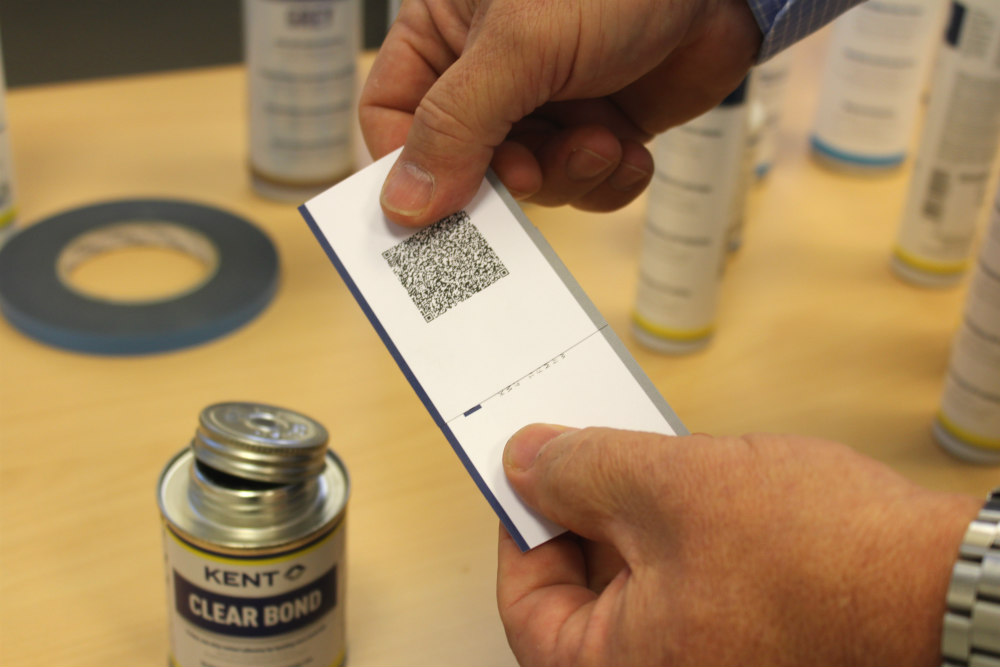
After the drying time of 12 hours the surfaces stick together forcefully
The advantages and disadvantages of contact adhesives at a glance
In order to make it easier for you to decide whether a contact adhesive is suitable for your adhesive application, we would like to take a look at the main advantages and disadvantages of contact adhesives.
Advantages of contact adhesives
- High shear strength
- Resistant to voltage spikes
- Simple application and application of the adhesive (for example via the integrated brush of KENT Clear Bond)
- Good adhesion to various, even on non-porous materials
- Good for bonding carpets, vinyl, leather, cardboard, rubber and soft fabrics
- KENT Clear Bond: Flexible and repositionable up to 90 seconds after gluing
Disadvantages of contact adhesives
- Compared to other adhesives: Poor tensile strength
- Flammable solvent
- No gap filling properties
If you are looking for a glue to fill a gap, we recommend KENT PREMIUM PU REPAIR 1.5 MINUTES.
Any more questions?
If you have further questions about contact adhesives and their application in the areas of automotive, industry or marine, we would be happy to advise you personally. Please use our contact form or contact us by phone on 01383 / 734355.
We look forward to hearing from you.
